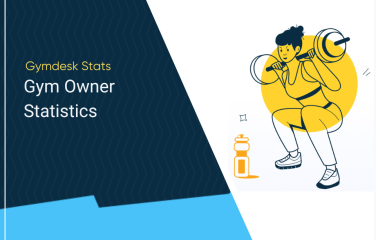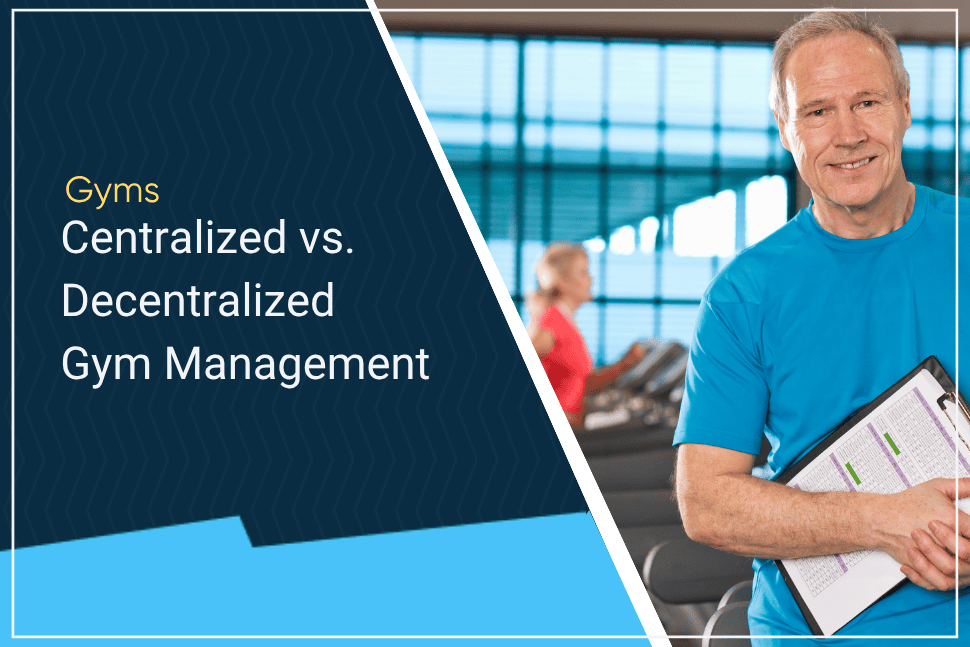Imagine increasing your gym’s revenue by 25%, immediately.
Does that sound impossible?
Not only is it possible, but it’s also a requirement if you want your gym to survive in the long term. Maybe you’re struggling to get the results you need; you’re chasing clients for money, dealing with consistent non-renewals, and fighting an uphill battle against churn.
If you’re unhappy with the revenue you’re generating and you’d like to see a change, keep reading. In this post, you’ll learn how to:
- Boost revenue with automation
- Recover failed payment charges
- Reduce customer service costs with self-service
- Reduce late payments
- Build stable cash flow in your business
Let’s get started.
Why You Need To Streamline Your Gym’s Billing
According to the IHRSA, 63% of gym memberships are completely unused. Approximately 22% of new gym members stop attending after 6 months, and 18% never attend the gym. That’s a problem because it means several things:
- Inactive members typically don’t update their billing information
- Inactive members don’t buy more
- Notifying inactive members may lead to increased churn and a revenue drop
Then there’s the issue of lost revenue due to payment failures. Motionsoft lists an average payment decline rate of 10 – 16%. If your club is processing $100,000 per month, a 10 – 16% you’ll lose $10,000 – $16,000 each month.
That’s a $120,000 – $192,000 loss annually.
Not good.
So far, we’ve identified several billing problems that gyms are facing.
- High member inactivity rates: If your members don’t come to the gym, they’re probably not going to update their billing details.
- Low-dollar recurring revenue: These low-value delinquent accounts are (much) less attractive to collections agencies. Involving collections for recurring payment issues is unlikely to resolve your billing issues or improve customer goodwill.
- Manual billing process: It’s still common for gyms to rely on staff to make payment reminder phone calls. Manually following up with customers is not as efficient as automated processes that are impartial and nonjudgmental.
- Billing errors and inflexibility: When member payments are declined, there’s typically no retry system in place. Repeated declines lead to member frustration and a loss of trust, which in turn increases your churn rates.
Here’s the thing about your billing processes.
This isn’t a people problem, it’s a systems problem. If you’re dealing with these issues, your gym needs a system update to fix these problems. A good system includes:
- A list of staff
- Staff roles and responsibilities
- Tasks and steps
- Workflows
- Conditions and triggers
- The expected outcomes
If it’s handled properly, you’ll find that these billing and payment issues become a rarity in your business. We’re getting ahead of ourselves, though. Before we can streamline our gym’s billing processes, we need to identify which processes need to be improved.
The billing processes your gym needs to streamline
Here’s a shortlist of the billing processes your gym needs to streamline.
- Recurring billing: You need to be able to maximize the revenue you bring in. To achieve this, you’ll need to accomplish a few key goals: (a.) make it easy for members to pay via a variety of payment methods. (b.) offer payment flexibility that’s dependent on the date of sign-up, rather than at a set time each month.
- Payment reminders: Your payment reminders should be primarily automatic. It’s a good idea to send out payment reminders via email before a member’s card is charged. If they’re inactive, that’s okay because there’s still a written record of your communication.
- Payment recovery: This is where manual communication is necessary. Personalized, one-on-one attention is an effective way to deal with delinquent accounts. This is another area where flexibility is key. Approaching members with empathy, respect, and a willingness to work out the details is absolutely essential to retaining members and collecting outstanding payments.
- Self-service options are easy ways to reduce staff expense, reduce employee workload, and improve cash flow. When gym members know they can log into their online dashboard and view a detailed breakdown of their spending, trust is easier. There are no concerns about hidden fees or unexpected charges. Your members can monitor and confirm their billing data, reducing complaints and chargebacks.
These processes are important because they need to be dialed in before your gym grows. If they aren’t optimized, you’ll find revenue growth stalls, or worse, it falls apart once you’ve achieved a level of growth that’s unsustainable. If that happens, the damage to your reputation can be significant.
How to streamline your gym billing processes
Okay, we’ve reviewed the areas that need optimization in our billing processes. Now it’s time for us to take a closer look at how we approach that. We’re going to examine the major areas, taking note of any specific requirements that need to be addressed.
Step #1: Streamline your Recurring Billing
Several areas need immediate attention. These areas will yield significant gains in a relatively short period.
- Offer flexible billing cycles: Provide your members with the option to pay for their membership on a weekly, monthly, quarterly, or annual basis—reward members who prepay for services.
- Add payment options: Make it easy for members to spend more money with you (e.g., credit/debit cards, checking account, PayPal, Venmo, or Cash App). Offer increased flexibility for the payment options you want and decreased flexibility for those you don’t prefer. More flexibility is offered to direct debit members, while less flexibility is provided to those who pay cash.
- Prioritize autobilling: Transition the vast majority of your members to automatic billing, which collects payments via direct debit, credit/debit card, or digital wallet. Reward stronger payment methods, such as direct debit, over more inconsistent methods like credit/debit cards.
- Auto-adjust billing cycles: You’ll want to automatically adjust billing when gym members change membership tiers, and pause or cancel their memberships. Make it easy for customers to adjust their billing cycles when needed.
- Payment reminders: As I mentioned earlier, you’ll want to send out payment reminders. This process should be largely automatic. Sending out payment reminders via email before a member’s card is charged reinforces trust and transparency. If your members are still inactive, that’s okay because there’s still a written record of your communication.
Tools needed: You can automate recurring billing via gym management software like Gymdesk or a merchant processor like Braintree or Stripe.
Step #2: Streamline your Failed Payment Handling
These features are essential; the better you are at preventing or handling failed payments, the more revenue you’ll bring in. The steps below are all useful, but it all depends on the payment processor you choose and the gym management software you’re using.
- Set up dunning management: Your gym management software or payment processor should automate retries, notifications, and dunning management (e.g., sending emails or SMS after a failed charge). With gym management tools like Gymdesk, you can customize how failed payments are handled. Dunning systems can automatically retry failed transactions, allowing customers to address any payment issues.
- Set up your Card Account Updater (CAU): CAU is a service offered by major credit card networks (Visa, Mastercard, and American Express) that automatically updates saved card information when a customer’s card details change (e.g., lost or stolen card, expired cards, etc.). Some payment processors, like Stripe and Square, also offer this service. Stripe’s real-time CAU is built in; they automatically update expired or replaced cards. Square has a similar service that requires manual entry, i.e., emailing customers a link to update their credit card details. If you’re working with a payment processor like Stripe, this means all of those inactive customers will continue to make their payments on time!
- Create a failed payment system: Payment recovery should be a manual process. This is where personalized, one-on-one attention shines. You’ll want to determine which staff members are responsible for reaching out to customers, specify what they can and cannot say, and outline the way you want the work to be done. Take the time to create a workflow with the specific actions and steps you’d like them to take.
- Escalating action: If your payment reminders aren’t working and you find that members are still unresponsive, your dunning systems should escalate to more assertive actions. While options like account suspension, cancellations, final notices, and in extreme cases, collection activity are all on the table, it’s important that you use these tools with care. Thoroughly document the actions you’ve taken, making sure that only the right employees have access to this data.
The more proactive you are at handling failed/non-payment, the easier it will be to minimize lost revenue and retain the members you’ve worked so hard to attract.
Tools needed: You can set failed payment handling at the payment processor or application level. If you’re using gym management software like Gymdesk, you can customize these rules directly on our platform.
Step #3: Offer Self-Service Options
Self-service billing options are important for your gym for several reasons. Your front desk and administrative teams no longer have to chase customers down for money. With self-service options, members have full transparency and control over their financial data and the purchases they’ve made. This is an easy way to build trust.
Here’s a list of self-service options you’ll want to make available to members. These self-service options should allow members to:
- Update payment info, change their billing preferences, and view invoices on their desktop or mobile device
- Switch to direct debit, or add or update credit/debit cards
- Pay or update their billing via app notifications or SMS links
- Opt in to receive SMS/email reminders before and after billing dates
- Auto-verify expiring cards (via a CAU system) and prompt users proactively via an online dashboard
- Request cancellations with confirmation and clear guidelines
- Allow members to pause their billing during vacations or periods of injury
- Give members access to receipts and invoices
- Offer members-only incentives if they enroll in autopay
Can you see the savings?
If a single member asks for help with all of these, it’s a lot of work. Can you imagine having to help fifty members with all of this? It quickly becomes an expensive and wasteful effort that you’re forced to pay for.
It’s really that simple.
Tools needed: You’ll need gym management software that offers members a self-serve option. If the tool you’re using is fairly robust, this should be available to your members. If you’re using Gymdesk, members have a self-service portal they can use to manage their membership details. They can update their personal and payment information, sign up additional family members, get access to exclusive member content, and book private classes, and all of the basics we’ve covered above.
If you’re going to go the self-service route, you’ll want to make sure that your policies, procedures, and workflows are all well documented. You’ll still need to determine who will be responsible for the self-service administration.
What if Streamlining Your Gym Billing Process Isn’t for You?
It absolutely is for you.
It’s also for your members, your staff, and your business. If you want to take care of them, billing optimization is how you do it.
Here’s why.
There are five main categories in your business.
- Product/service management
- Legal management
- Systems management
- Communications management
- Cash flow management
Which category is the most important?
Can you guess?
If you guessed cash flow management, I’d say you’ve got a pretty good head on your shoulders. Good cash flow management is the lifeblood of your business. If your gym is healthy, cash flows through your business consistently.
There’s a cadence to cash flow management. Obviously, you want more money flowing in and less money flowing out.
When you streamline your billing processes, you get to keep more of your money. With increased revenue, you can:
- Invest in better equipment,
- Hire highly trained, well-qualified staff
- Offer a diverse mix of classes and services
- Expand your facility
- Improve your systems, procedures, and workflows
But it gets better.
With more revenue, you can also:
- Diversify your revenue streams, moving beyond membership fees
- Build investments that throw off more cash
- Minimize your tax requirements (legally)
- Add a buffer that strengthens your gym’s resilience in the face of economic downturns and competition.
It sounds like I’m overselling it, doesn’t it? Well, let’s take a look at the data.
- Gyms using automated billing systems see up to a 25% increase in revenue
- Automated payment recovery (dunning) can recover 80% of failed recurring charges
- Member self-service billing portals lead to a 20% increase in upsells and plan upgrades.
- Automated reminders and billing tools reduce late payments by as much as 70%. Source: Zen Planner
- Automation saves gyms up to 60 hours per month in staff time. Source: Mindbody Business Benchmarking Report
- Gyms that are using automated billing have collection rates that are shockingly high. As high as 97%, compared to significantly lower rates with manual invoicing
Can you see what’s happening?
When you streamline your gym billing processes, you increase the amount of revenue at your disposal. If you have good cash flow management, you have everything you need to scale your business up or down.
Streamlining Your Gym’s Billing Process is a Necessity
As we’ve seen, 63% of gym memberships are completely unused. Approximately 22% of new gym members stop attending after 6 months, and 18% never attend the gym. That’s a problem because it means several things:
- Inactive members typically don’t update their billing information
- Inactive members don’t buy more
- Notifying inactive members may lead to increased churn and a revenue drop
You can change that.
If you have the right processes in place, this isn’t a problem. Create clear policies and procedures, bring A-player staff on board, leverage gym management software, and you’ll find that collection rates of 97%+ are achievable.
 Gym Owner Statistics: The State of Gyms, Member Trends, and Usage Data
Gym Owner Statistics: The State of Gyms, Member Trends, and Usage Data




 EN (English)
EN (English)
 JA (日本語)
JA (日本語)